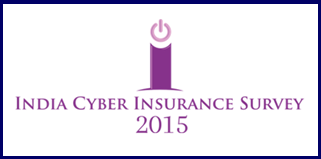The recent circular from the Maharashtra Government explaining the law of “Sedition” as mentioned in Section 124A of IPC has opened up a debate rightly in how the law can be misused.
Refer here for more information
For records the section states as follows:
Section 124A in The Indian Penal Code
124A. Sedition.—Whoever, by words, either spoken or written, or by signs, or by visible representation, or otherwise, brings or attempts to bring into hatred or contempt, or excites or attempts to excite disaffection towards, 102 [***] the Government established by law in 103 [India], [***] shall be punished with imprisonment for life, to which fine may be added, or with imprisonment which may extend to three years, to which fine may be added, or with fine.
Explanation 1.—The expression “disaffection” includes disloyalty and all feelings of enmity.
Explanation 2.—Comments expressing disapprobation of the measures of the Government with a view to obtain their alteration by lawful means, without exciting or attempting to excite hatred, contempt or disaffection, do not constitute an offence under this section.
Explanation 3.—Comments expressing disapprobation of the administrative or other action of the Government without exciting or attempting to excite hatred, contempt or disaffection, do not constitute an offence under this section.
Following a direction from Mumbai High Court to the Government of Maharashtra that a proper instruction be given to the field level Police so that the section 124A is not misapplied, some official of the Government has issued a circular in Marathi. The press has indicated that the circular has tried to explain the views of the High Court but in the process has stated that any criticism of a Government official which word includes representatives of the Government such as the MLAs, Zilla Parishad members etc will also come under this section.
It is obvious that for the Police in Maharashtra which interpreted a “Like” of a face book posting to “Any message sent from a communication device” and arrested a lady, this circular gives a free license to arrest persons under Sc 124A which may result in “Life imprisonment” and is therefore cognizable and non bailable.
There is therefore no two opinions that Maharashtra Government should not only withdraw the circular but also get an undertaking from every policeman in the State that he will not use SEC 124A IPC against any criticism of a Government representative unless it is accompanied with a threat of breaking the country like what LTTE elements in Tamil Nadu or the Terrorist and some political elements in Kashmir indulge in.
Why I insist on such an undertaking is that Police either are too naive or some times crooked and apply non existent laws to harass people. We have seen that in two recent cases one in Tamil Nadu and another in Maharashtra, cases have been booked under Section 66A which has been scrapped by Supreme Court (albeit for wrong reasons).
We have extensively discussed in these columns why Supreme Court was wrong to just believe that whatever Police constables interpret is the law and therefore if they make a mistake, it is attributed to the law itself being bad rather than the policemen being bad interpreters of law.
I expect that the circular on Sedition once issued will therefore be used by the Police even after it is withdrawn to harass people. Hence a mere administrative withdrawal or clarification by another circular will not suffice. We need a more visible action by none other than the Chief Minister of Maharashtra to reduce the possibilities of misuse of the circular. It would be better if the clarificatory circular states that the erring Policemen will be booked for malicious mis-use of law.
In the meantime, if some capable person such as Shreya Singhal 3 can move the Supreme Court and ensure that a bench consisting of Honourable Justices Nariman and Chelmeshwar hear the case, then it may be possible to get Section 124A to be struck down. Never mind the genuine cases where it would be required. It is not the responsibility of the Supreme Court to ensure that there are stringent legal provisions in our law as long as they can draw a link between Freedom of Expression and an errant police action.!
Naavi






